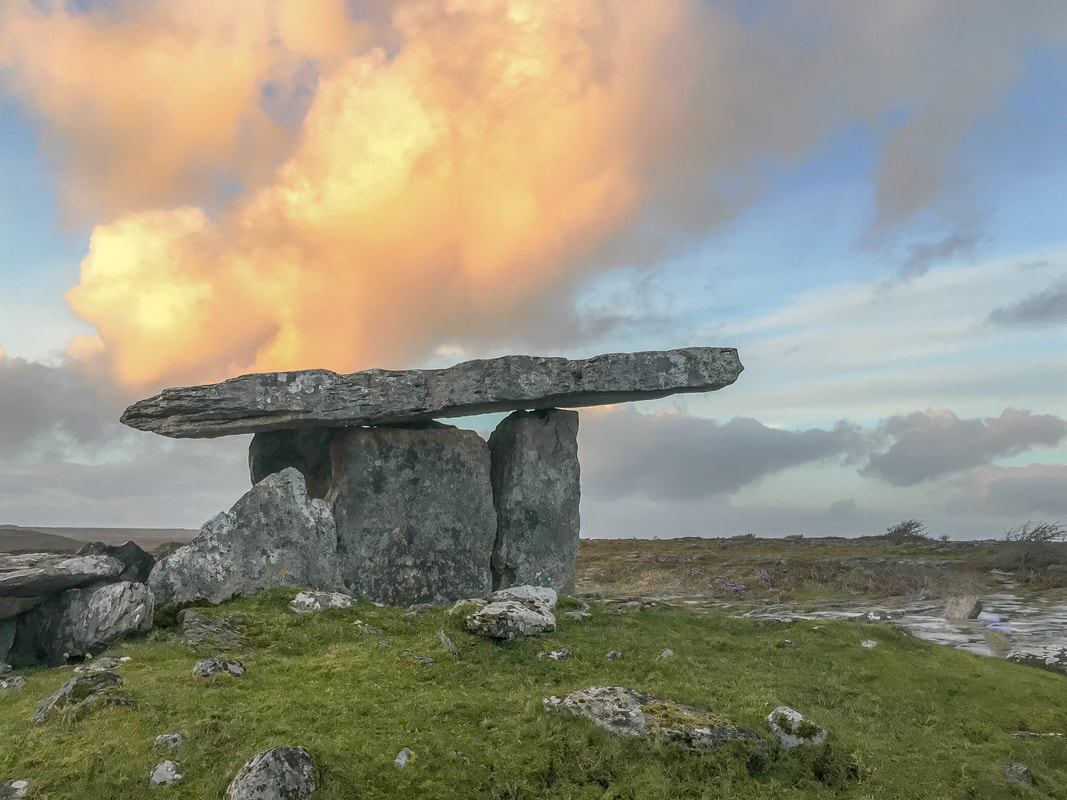|
“Poulnabrone”
11 x 16” photography Poulnabrone dolmen is an unusually large dolmen or portal tomb located in the Burren, County Clare, Ireland. Situated on one of the most desolate and highest points of the region, it comprises three standing portal stones supporting a heavy horizontal capstone, and dates to the Neolithic period, probably between 4200 BC and 2900 BC. It the best known and most widely photographed of the approximately 172 dolmens in Ireland. The karst setting has been formed from limestone laid down around 350 million years ago. The dolmen was built by Neolithic farmers, who chose the location either for ritual, as a territorial marker, or as a collective burial site. What remains today is only the "stone skeleton" of the original monument; originally it would have been covered with soil, and its flagstone capped by a cairn. All the stones used in the construction of the dolmen were brought to the site from elsewhere as none match the geological make-up of the Burren and were then assembled with perfect balance and precision without concrete or any kind of compound. The capstone of the tomb is set at an angle and the remains of the 22 bodies where found at the front, towards the highest point of the roof. This placement, it is thought, enabled the soul of the deceased to depart quickly and easily down to the afterlife or the Otherworld. The descension is not thought to be connected with the later notion of Hell; rather, the “underworld” here is simply one realm of the Otherworld. Another theory as to the positioning of the stones suggests that instead of helping souls descend to the next life, the dolmen prevented evil spirits from entering this world. Both the human remains and the burial objects date to between 3800 BC and 3200 BC.
0 Comments
Your comment will be posted after it is approved.
Leave a Reply. |
July 2024
|
Contact Me[email protected]
508-631-7666 |
© COPYRIGHT 2019. ALL RIGHTS RESERVED.
|

 RSS Feed
RSS Feed